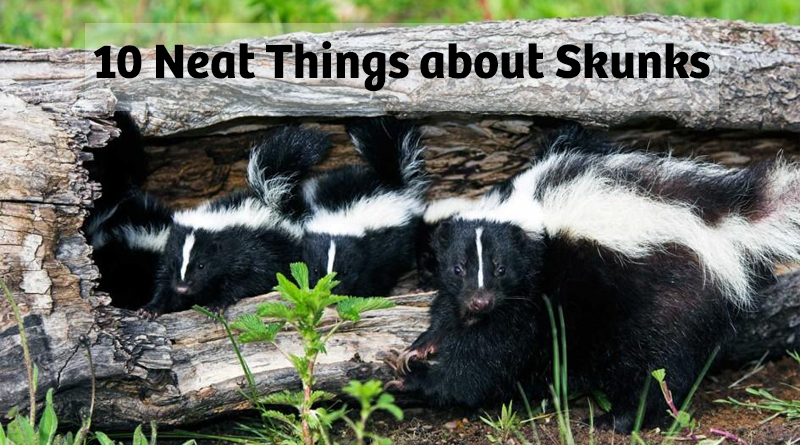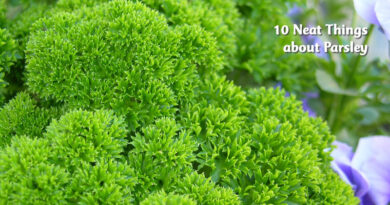About Skunks
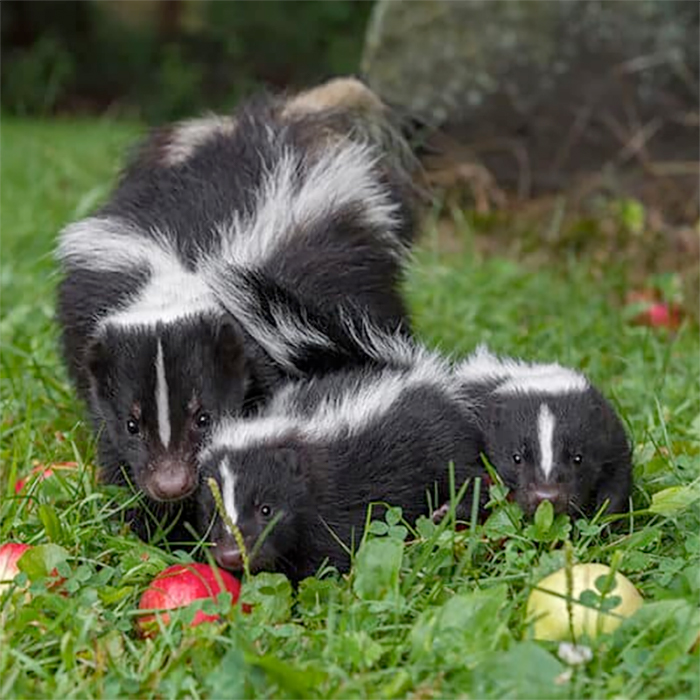
1. Skunk diet.
Skunks have a varied diet that includes roots, seeds and berries; small mice, birds and eggs; and, of course, grubs. If you’ve ever awakened one morning to find your lawn torn up, you can bet you’ve got grubs (beetle larvae) feasting on the turf roots. Skunks, and sometimes raccoons, tear up the lawn to get at the grubs. You could say they’re doing you a favour by eating the lawn pests, but the dang animals never get all the grubs so the problem never goes away.
2. Skunks do smell.
You’d think the creature that can manufacture the strongest-smelling animal-made compound would be immune to it, but in fact skunks have an excellent sense of smell—as would be expected from a crepuscular hunter and forager—and they don’t like their own spray. Occasionally males will spray each other in mating season in battle for a female.

3. Birds of prey don’t smell.
Skunk spray protects these otherwise vulnerable creatures from a wide variety of predators including foxes and even bears. Too bad for skunks, though, birds of prey rely on eyesight when hunting and have poor to non-existent olfactory abilities. The great horned owl is the most serious predator of skunks.
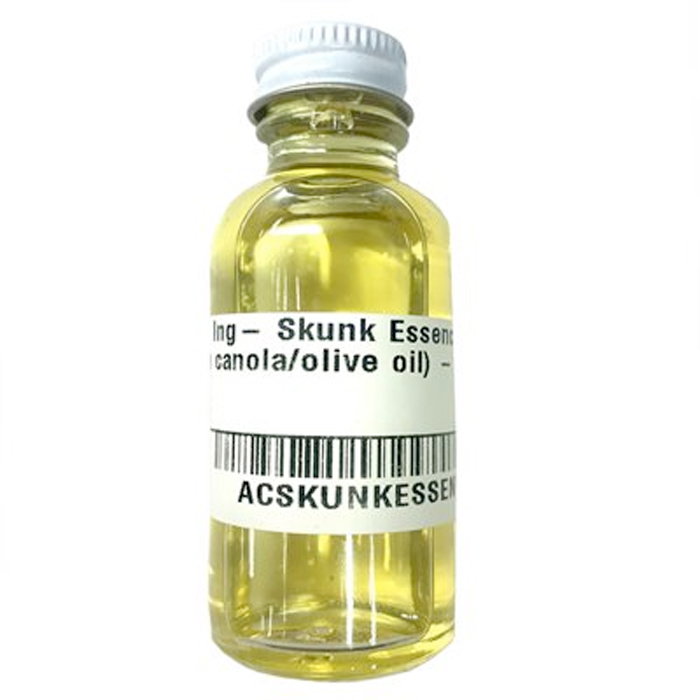
4. Skunk oil.
“Skunk oil” today is often used to refer to the spray, but in earlier times it was understood to refer to rendered skunk fat. It doesn’t have a strong odour itself but can pick up the odour depending on how the skunk was killed and skinned. Sometimes wintergreen was added to mask any odour and perhaps it was that addition that imbued skunk oil with a warming effect on the skin. Used medicinally by some Native North American groups, many settlers would purchase it and keep it in their first aid kits. It was used as a liniment, a moisturizer and a cough syrup. Another account states that: “Some women even rubbed it in themselves for contraception.” (Quoted in Country Folk Medicine by Elisabeth Janos.)

5. Skunk spray.
The nasty spray from a skunk comes from its anal scent glands — organs just about all carnivores have; it’s obviously, far less developed and specialized in most carnivores. Sulphur-based compounds are what make it so potent. The scent from a single spraying can be detected up to a mile away, even though a typical spraying contains, at most, a teaspoon of fluid. In addition to the off-putting smell, it is an irritant that can cause temporary blindness, nausea, vomiting and even render a human unconscious. Pray you avoid it.
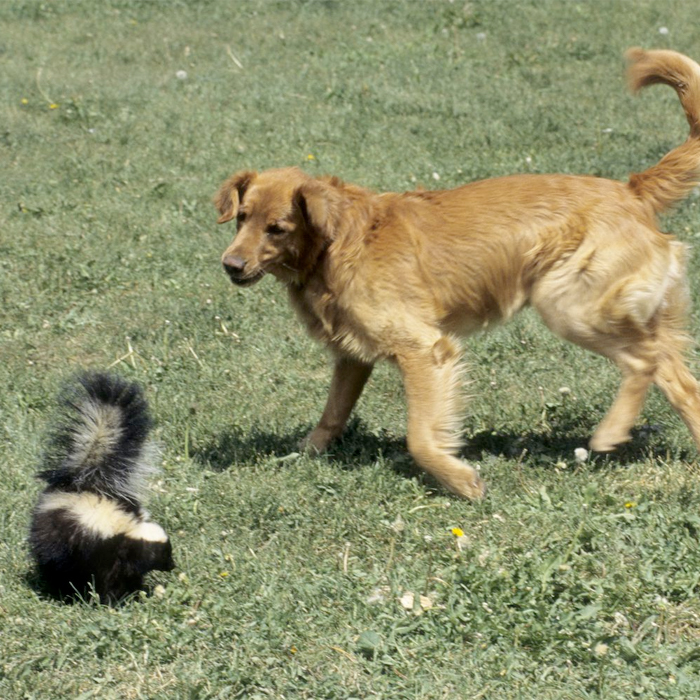
6. How to avoid being sprayed.
A skunk doesn’t want to spray, so if you act sensibly when you come across one you should be able to avoid getting hit. When it feels threatened, the skunk will first growl, stamp its feet and put up a bit of a fuss. This is your cue to get away. Turn your back and run. If you can get more than 15 feet away, you should be safe. There’s not a lot you can do if you scare a skunk without realising it. And, of course, there’s no accounting for the curiosity of your dog.
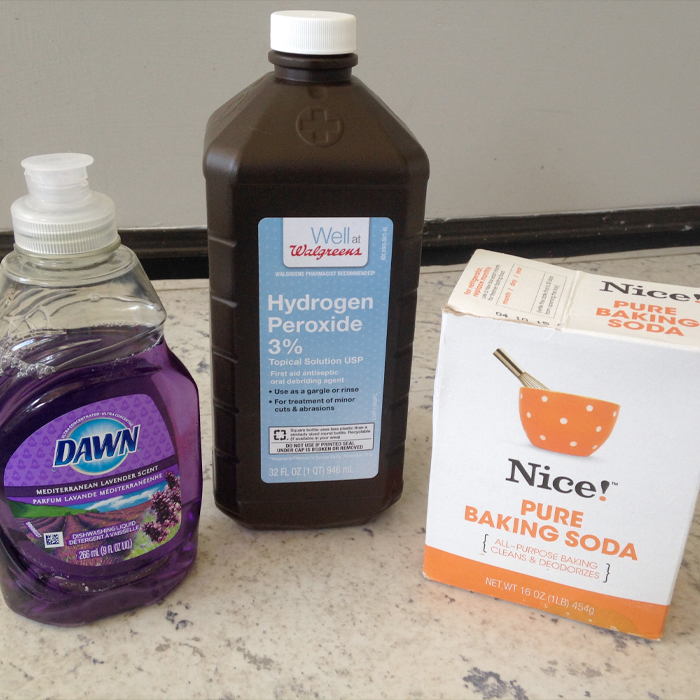
7. How to get rid of the smell.
First, accept that you won’t be able to eradicate it completely. That takes time. Second, don’t bother with tomato juice or vinegar; neither is particularly effective. The best mixture seems to be: one quart of fresh hydrogen peroxide, 1/4 cup of baking soda and enough dish detergent to make it stick—maybe half a cup. Mix it in a big container because the hydrogen peroxide and baking soda will foam up. Don’t try to store it because it could explode if capped. Since it’s a peroxide mixture, it can bleach hair and fabric, and it could do serious damage if it gets in the eyes or into contact with other mucous membranes.
8. How skunks kill and get killed.
Rabies is prevalent in the skunk population. Anyone bitten by a skunk absolutely must be treated immediately. Nonetheless, human infection by skunks is extremely rare. It is far more common for humans to kill skunks. Although the creatures have excellent senses of hearing and smell, they don’t see very well. That’s why most of the time you see a skunk it’s roadkill. Cars, trapping and poisoning account for about half of all skunk deaths.
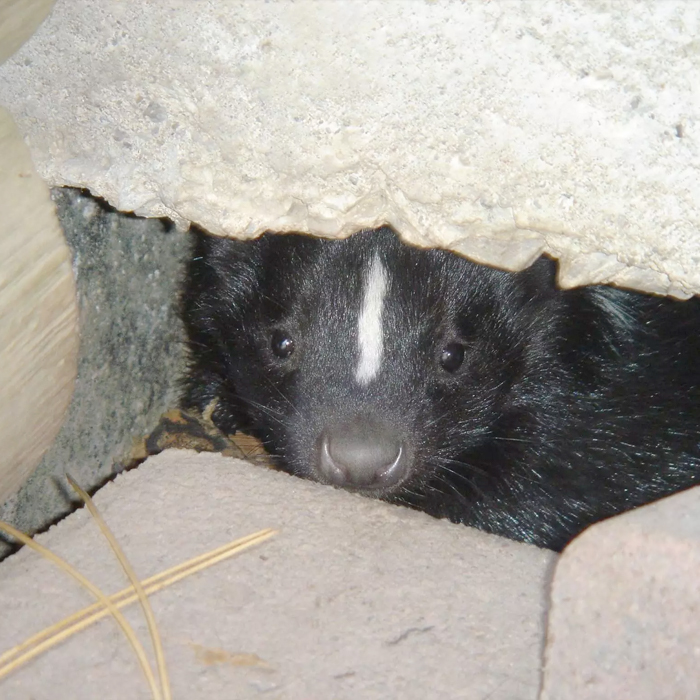
9. Where skunks live.
Skunks are burrowing animals that come out to hunt and gather at dusk and dawn. They will dig themselves hidey-holes to spend the daylight hours in, but when a convenient alternative presents itself—like, say, under your front stairs—they won’t trouble themselves with all that work. In the summer a den will include a solitary male or a female and her kits (around 5, but anywhere from 2 to 16). In winter, females tend to den in groups, huddled together, while a male will either bed down alone or join a group of females. Skunks don’t hibernate, but they do go through periods of torpor (reduced physical and physiological activity).

10. What to do if a skunk sets up house under your house.
The goal is to persuade the skunk to move along then seal off all possible access to the area. Keep a radio on an all-talk station near the den and keep it flooded with light day and night. Skunks prefer a dark and quiet site, so will usually relocate faced with such disturbance. When the skunk is gone, seal off the area with screening; attach the top to the structure you’re sealing off, and fold the bottom out, with a lip of at least eight inches buried one inch deep. (This will prevent a skunk digging its way in.) This should work most of the year, but not now.
I hate to break it to you, but at this time of year a skunk denning near you is most likely a mother with kits. There isn’t much you can do until the babies are old enough to relocate. If mom is gone and you seal up the den with the kits inside, she will destroy your home trying to get to them. And if she should fail, aside from being cruel, what do you want with a bunch of dead baby skunks under your porch? Your best course of action is to be patient, keep kids and pets away from the den, pester with noise and light and wait until everyone has moved out. Then you can seal the space.
– Shauna Dobbie Copyright©
Pegasus Publications Inc.

